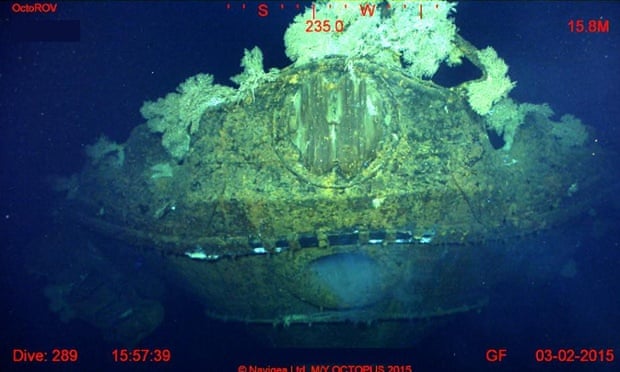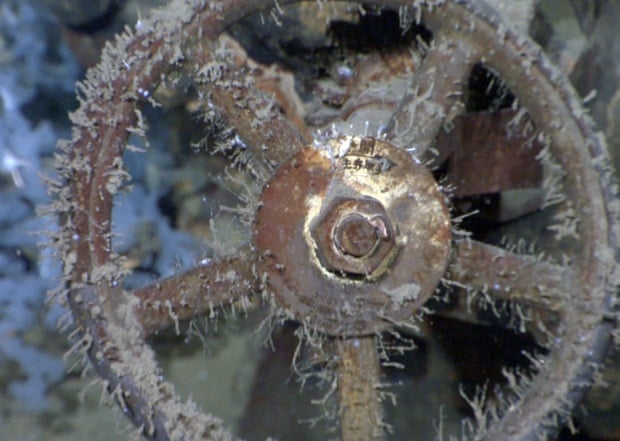
Sunk without trace in what some historians consider the greatest naval battle ever fought, the mightiest battleship ever built has been found off the Philippines by one of the world’s wealthiest men.
The multibillionaire Microsoft co-founder, Paul Allen, on Tuesday posted photographs of the wreck of the Musashi, a second world war Japanese battleship that, with its sister-ship the Yamato, was the largest – and most heavily-armed – warship ever launched.
“WW2 Battleship Musashi sank 1944 is FOUND,” Allen announced on Twitter, beneath a ghostly underwater photograph of the mammoth vessel’s rusting, coral-encrusted bow clearly bearing the chrysanthemum crest of the Japanese imperial family.
Other pictures taken on the floor of the Sibuyan Sea by a team from the M/Y Octopus, Allen’s luxury yacht and undersea exploration vessel, showed one of the warship’s enormous anchors and a heavily encrusted valve, above the words: “RIP crew of Musashi, approximately 1,023 lost.”

She was an awe-inpiring sight. “I had never,” the World War II Database records gunner Russ Dustan of the American aircraft carrier USS Franklin as saying, “seen anything as big in my entire life … It was huge.”
But mighty as she was, the Musashi was not invulnerable – especially to aerial attack. On October 18 1944, Japanese vice admiral Takeo Kurita sailed with a 67-strong fleet, including both the Musashi and Yamato, into the Sibuyan Sea, west of the Philippine island of Leyte, aiming to throw back an American landing and attack vulnerable US transport ships on the other side of the island.
At 8.10am on October 24 a spotter aircraft from the US carrier Intrepid spied the Japanese fleet, and by 10.27am, according to Japanese naval records, battle was formally engaged, with the Musashi’s massive guns in action for the first time.
But with few Japanese aircraft to fend off the airborne attacks, the enormous vessel eventually became a sitting duck, reduced to firing its mammoth guns into the water to send up huge spouts of water aimed at knocking the attacking aircraft out of the air.
“Running into one of these geysers was like running into a mountain,” one US pilot, Jack Lawton, was recorded as saying after the battle. “I felt the muzzle blast each time they fired. I could swear the wings were ready to fold every time these huge shockwaves hit us.”



No comments:
Post a Comment